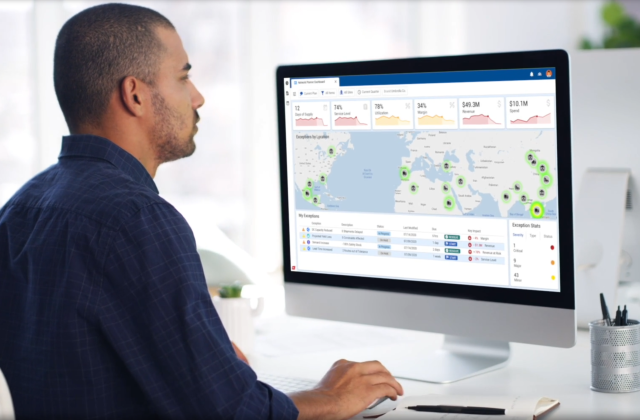There’s a popular quote often attributed to Albert Einstein that defines insanity as doing the same thing over and over but expecting different results. When it comes to supply chains, many of you may be able to relate to my modification:
“Insanity is managing your supply chain using the same disconnected spreadsheets over and over but expecting better results.”
The harsh reality is that our reality itself has shifted. We no longer live in a world where your company houses its entire supply chain within its own four walls. We no longer live in a world where CEOs and boards of directors only view supply chains as a cost-cutting function. We no longer live in a world where Excel is the best tool to manage your supply chain.
I recently had the privilege of sitting down with a group of experts to talk about the risks associated with Excel in our webinar Why Excel puts your supply chain at risk. Tabish Wani, Managing Director and Chief Operating Officer at Castolin Eutectic, Tariq Farooq, the former SVP of Global Supply Chain at Sanofi, and Rajesh Shetty, the Partner & Associate Director – Operations/Digital Supply Chain at Boston Consulting Group shared insights and best practices on making the move from Excel to advanced planning.
Timing is everything – and the time to move to an advanced supply chain planning solution is now
One of the very first things that came up is why now? Why is now the right time for companies to make the shift from spreadsheets to advanced supply chain planning? The opinion was unanimous – the world in which we do business has changed, dramatically, and things aren’t going back to the way they were. The rise of globally connected multi-enterprise supply chains coupled with an era of unprecedented disruption has triggered a renaissance in our industry – a fundamental need to realign the very foundations on which we run our businesses.
To survive we need to move away from the processes and legacy technology that’s led to silos, disparate decision-making and slow responses to something that inherently enables agility, concurrency and focused alignment across the entire value network. That complicated mess of spreadsheets many of you are still using to manage your supply chain isn’t going to cut it anymore. And if you’re honest with yourself, you know it.
Spreadsheets have their value, but in this context, they’re lousy at modeling and managing the real-time complexity and dependencies of today’s global supply chains. The data in them is out-of-date before the file even has time to open. They’re even worse for collaboration. All too often they’re passed back and forth via email, resulting in a mess of versions that makes decision-making a nightmare.
So why then has Excel remained so pervasive? There are dozens, if not hundreds of articles and research studies outlining the risks of Excel as a supply chain management tool dating back to over a decade ago. Yet various annual surveys continue to show that between 50-78% of companies still use it as their predominant means of supply chain planning.
Don’t let fear keep you from recognizing the risks of siloed, spreadsheet-based planning and the benefits of concurrency
The answer is fear. Fear of spending too much money. Fear of stressing already overburdened teams. And the biggest of all – fear of failure and what that means for your company, your team, and even your career. But as Wani, Farooq and Shetty all agreed, paralyzing fear and the inability to digitally transform your supply chain is opening you up to far greater risk than failure. Risk of financial impacts when the next big disruption hits. Risk of top talent leaving because they want to work with modern technology. Risk of your competitors passing you by.
Successfully transitioning from Excel to advanced supply chain planning could be the difference between your company not only surviving but thriving when the next big, global disruption hits. But the benefits go far beyond just the supply chain agility you can achieve when your end-to-end network is seamlessly connected. Based on Kinaxis customer and industry benchmarks, an upfront investment in an advanced planning practice can save your organization millions, and not after a 10-year ROI period. On average, companies save 1.5% of annual revenue when they ditch spreadsheets for concurrent planning solutions through reduced working capital, lower inventory carrying costs, and decreased manufacturing and premium freight costs.
[Learn more: What is concurrent planning?]
It's not just the bottom line you’re bolstering. There’s a very real benefit to your people as well. As Farooq so perfectly said, advanced supply chain planning solutions “liberate your team.” By investing in process and technology improvements you’re able to free up your planners’ time and eliminate mundane, repetitive tasks using digital process automation and machine learning. Your team becomes more efficient, but more importantly, they become happier because they’re no longer wasting cycles manually inputting and reviewing data in spreadsheets. With the supply chain talent wars still in full swing, you need every advantage you can get in hiring and keeping existing and future supply chain superstars.
So, is sticking with Excel worth the risk to your supply chain? Our experts say no. Check out the on-demand recording for more great insights, including how you can build your business case for change and how to define success.
And if you’re already convinced that you need to ditch spreadsheet-based planning, reach out. Kinaxis can help you go from Excel to advanced planning in as few as 12 weeks.
Additional Resources
- Concurrent planning frequently asked questions
- Supply chain management frequently asked questions
- Supply chain planning frequently asked questions
- Supply planning frequently asked questions






